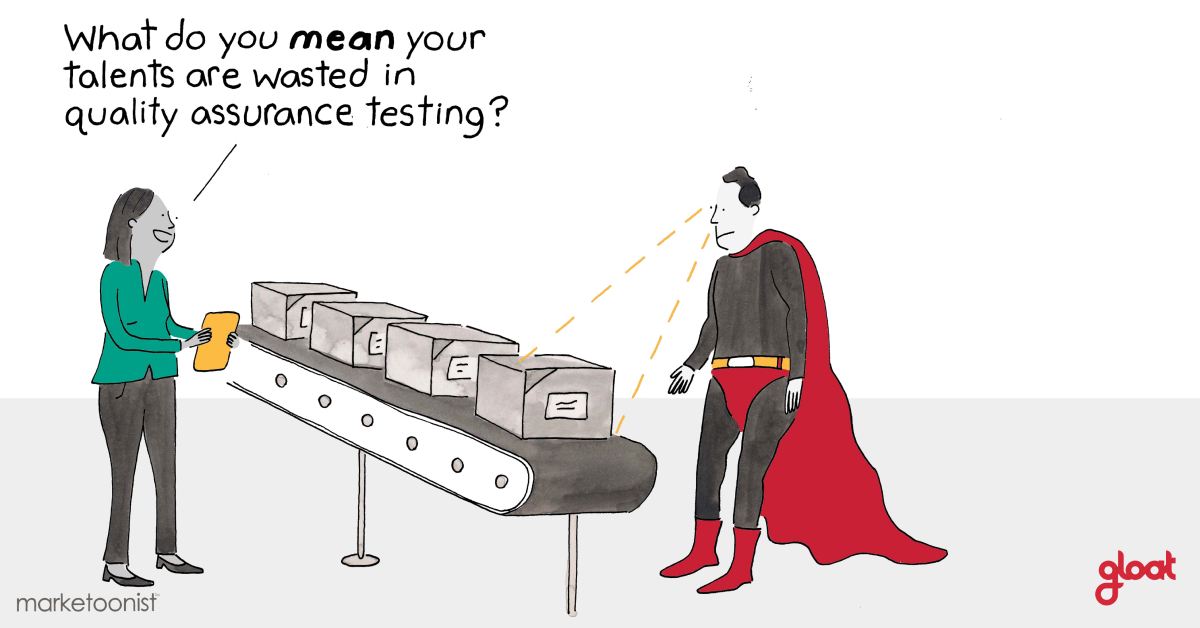How to maximize your workforce’s potential with career pathing
Are your people achieving all they’re capable of? Here’s how to enable them:

In this competitive talent landscape, every hire counts. From evolving consumer preferences to market volatility, businesses are encountering new challenges from every angle. As priorities mount and stakes raise, leaders must tap into every skill within their workforce’s arsenal to give their business a standing chance of overcoming unprecedented levels of disruption.
But empowering your people to achieve their full potential is easier said than done. Employees aren’t cogs in a machine; they’re unique individuals with diverse strengths, weaknesses, and sources of motivation. Consequently, a one-size-fits-all approach would never work.
Pre-defined career paths need to be replaced with initiatives that put employees at the center of their professional development. And until recently, it was nearly impossible to do this at size and scale. But today, technological innovation has the potential to change the game—as long as leaders know how to take advantage of it.
What is career pathing?
Gartner defines career pathing as the process of aligning opportunities for employee career growth with organizational talent priorities. The most impactful strategies go beyond solely focusing on vertical progression; instead, they also take lateral and cross-functional roles into account.
When done well, career pathing represents a major win for both employees and businesses. It enhances engagement and retention by encouraging people to get involved in learning and development opportunities that fulfill business needs. In fact, Deloitte found that learning opportunities, professional development, and career progression are among the top drivers of workplace satisfaction.
What are career pathing tools?
For a long time, businesses struggled to capitalize on career pathing’s potential benefits because traditional approaches set organizations up for failure. Leaders were tasked with mapping out what an employee’s path forward with their organization might look like. These predictions were fixed, and they didn’t take employees’ individual skills or interests into account. As a result, most career pathing models became outdated before HR could finish designing them.
Fortunately, that’s no longer the case. The rise of talent marketplaces replaces that heavy manual lift with intelligent career path recommendations. And rather than a single option for progression, leading platforms present users with various choices that outline different directions their careers could take. Oftentimes, these tools help employees discover roles that they never considered, but prove to be a near-perfect match for their skills and interests.
The best career pathing tools take it one step further by offering users an immediate solution to understand the steps they’ll need to take to reach their long-term career goals. Employees can identify skills gaps they must bridge and learning and development opportunities that will help them get up to speed.
4 Steps to help employees achieve their full potential with career pathing
Thanks to the newest generation of career pathing tools, empowering people to achieve their full potential is easier than ever. Here are some best practices that will take your strategy to the next level:
#1. Open their eyes to horizontal growth
For a long time, vertical progression was the dominant way to develop your career. Employees were expected to look up and down their linear ladder, without much room to consider opportunities outside of their function.
In the new world of work, that’s rapidly changing. Internal mobility is a priority for workforces, with nearly two-thirds of employees saying that they would like to be considered for new and different roles with their companies. To keep pace with these evolving expectations, leaders should leverage career pathing as a means to open employees’ eyes to opportunities outside of their linear paths. The tools will make suggestions based on personal interests and skills, in turn helping employees discover new opportunities with other parts of the business.
#2. Keep them accountable
The best career pathing tools don’t just show employees different long-term paths; they empower users to take action immediately by breaking down the skills gaps they need to bridge. Career pathing can pinpoint projects, gigs, and mentorships that will help users develop the competencies they need to move into their desired roles. Some career pathing tools even have boards that let employees track their progress, so they can see how they’re doing as they work towards their career goals.
#3. Bring employees and managers together
While employee ambitions should drive career trajectories, managers also need to weigh in to ensure their goals align with business priorities. Career pathing creates an ideal foundation that makes it easy to bring managers into the conversation. Once employees explore the options that the tool provides, they can sit down with their managers to discuss how their goals fit into enterprise-wide objectives.
#4. Make talent sharing your norm
Even the best career pathing tool isn’t enough to single-handedly transform internal mobility. If you want to empower your workforce to achieve their full potential, tech-enabled solutions need to be accompanied by a profound culture change.
Most importantly, managers across your organization should promote talent sharing, as opposed to being possessive of their all-star employees. While it can be a tricky transition, ultimately this approach will give managers wider talent pools to tap into and empower employees to build a broader knowledge base.
Decades ago, having a few employees who weren’t achieving their full potential was just expected, and losing people due to disengagement was something businesses could cope with. But in our current fast-moving and highly competitive talent landscape, every single member of your workforce needs to be empowered to achieve everything they’re capable of. To learn more about the powerful role that talent marketplaces play in this journey, check out our guide, Unlocking career agility: from ladders to lifelong reinvention.




